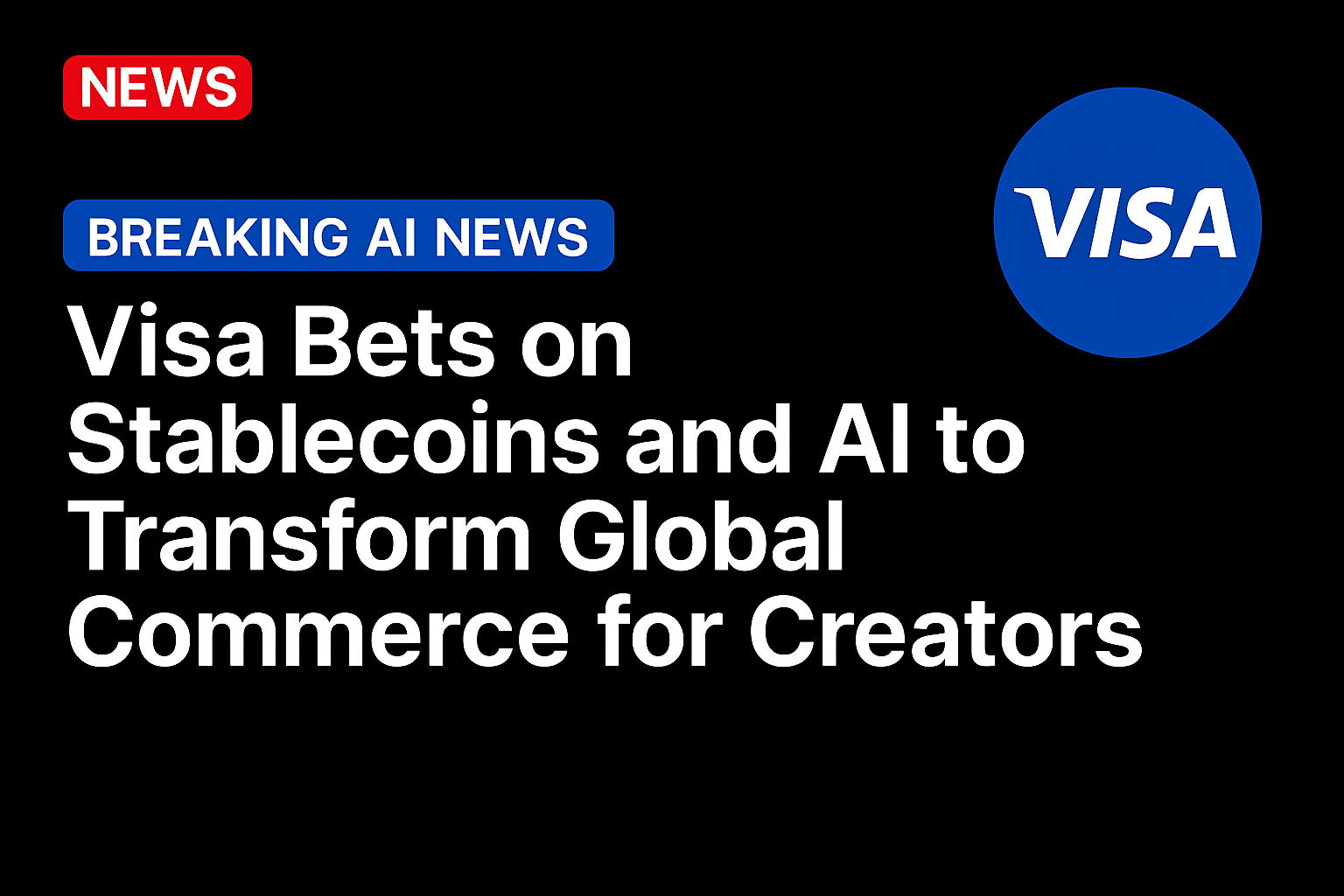Traditional cross-border payment systems weren’t built for today’s global workforce. Millions of creators, freelancers and on-demand workers now expect to be paid instantly. And in many countries with volatile fiat currencies, they want that payment in digital dollars. These micropreneurs don’t want to wait days for transfers or lose money to fees to accelerate their paydays.
Their expectations for speed, flexibility and transparency are exposing just how out of step existing banking infrastructure has become for this new segment of worker. It’s even leading to a shift in how money moves, with Visa, the world’s largest payment network, piloting a feature that allows creators and gig workers to receive payments in dollar-backed stablecoins directly into their wallets.
“We do think it’s going to be real. The technology is too efficient. It’s just right for this type of deployment,” Mark Nelsen, head of product for Visa Commercial Money Solutions, said during a discussion hosted by PYMNTS CEO Karen Webster.
Stablecoins remain the tiniest fraction of global payment flows, but they add a new payment method that can be compelling across three conditions: high currency volatility, limited access to banks and bank accounts, and immediate payment urgency. Many emerging markets where creators and gig workers are based combine all three.
“There are 30 million creators and they’re in all these markets where the local currency isn’t really strong,” Nelsen said. “That’s where stablecoins can offer a sweet spot in being able to say, ‘We can pay you immediately.’”
Strip away the buzz around the “creator economy,” and what’s left is a global wave of independent earners. They range from YouTubers and musicians to freelancers and influencers, who still struggle to get paid quickly because of currency issues, bank hurdles and platform delays.
Advertisement: Scroll to Continue
“The biggest near-term opportunity [of stablecoins] is fixing some of the cross-border flows that are really inefficient when using traditional transaction flows,” Nelsen said.
Creators Are First in Line for Better Payments
The global money movement market is enormous, north of $190 trillion. But it is deeply fragmented. Traditional rails have done a heroic job of connecting billions of people over the past half-century. But builders of the new digital economy are discovering that no single rail is built to handle all use cases.
Stablecoins and the frameworks surrounding them, Webster noted, are “putting pressure on the more traditional financial environments.”
In Visa’s context, stablecoins are tools with a narrow but critical function: provide instant settlement in a trusted currency.
“You don’t need a bank account to have a stablecoin wallet. It addresses some longstanding issues,” Nelsen said. “Outside of the U.S. … you’re going to have to” support stablecoins or risk irrelevance.
And while creators don’t fit neatly into legacy banking stacks, they are still building businesses. Visa sees their frustration not as a niche problem, but as a blueprint for future commerce. That’s why the company is helping architect tools and processes that stand at the intersection of cash-in and commerce-out. These include instant earnings via Visa Direct, automated deal tracking, and payout flexibility that spans traditional bank accounts and stablecoin wallets, whether they’re denominated in dollars or digital dollars.
“Creators are just individuals,” Nelsen said. “They’re not even businesses until one day they look up and realize they’re making full-time income.”
For many of them, connecting a checking account to a global platform is either impossible or inefficient. And even when it works, the resulting delays, like three days for ACH, longer for cross-border wires, aren’t just inconvenient. They may threaten rent payments, vendor relationships or even personal safety in areas with inflationary currencies.
That’s what Nelson said that Visa’s AI-enabled “agent tools” step in, helping creators manage brand deals, track earnings, reconcile payments, and control cash flow across multiple platforms without needing to belong to a traditional business structure.
While stablecoin payouts are not a universal fix, Nelson believes they may present an advantage in markets where getting $500 today is worth twice as much as receiving $550 five days from now. And for Visa, they open the next frontier of network growth: onboarding the long tail of earners who are technically global but financially disconnected.
Disintermediation or Evolution?
Still, for all the experimenting and even implementing, stablecoin activity still feels like early innings in a heavily refereed game. But banks themselves aren’t sitting it out. They’re observing a growing stablecoin-enabled ecosystem and a consumer appetite for faster, more direct means of settlement. And they want in.
But banks face the dual problem of avoiding obsolescence while also not wanting to pick a stablecoin “winner.”
Nelsen called it “still probably the hardest thing,” given uncertainty around who will control stablecoin deposits long-term. Whether the future model is a consortium of banks or broader interoperable rails, Visa’s strength is its neutrality: “We’re not trying to pick any favorites or winners. Just give the folks as much choice and optionality as they could possibly support,” he said.
By turning what could be a binary choice (cards vs. crypto) into a multirail marketplace. Visa isn’t asking users to abandon their tools. Nelson said that it’s building the connective tissue between them.
With “11 billion endpoints,” as Nelsen noted, and recognition from industry experts as the “number two” real-time remitter globally, Visa is transforming that scale into choice for receivers.
At the same time, Visa isn’t turning its back on cards, ACH or wires. Rather, Nelson said, it’s constructing a more flexible payment architecture where all these options coexist, and where the most efficient tool for the job wins.
Source: https://www.pymnts.com/




